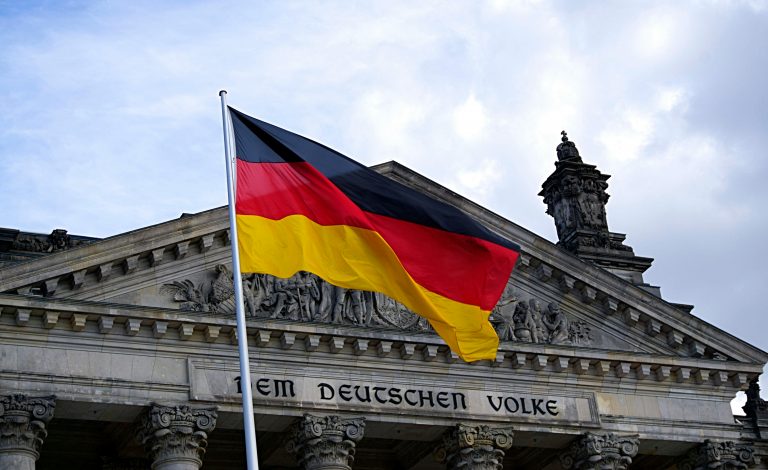
Update: Friedrich Merz has won.
Friedrich Merz, leader of the center-right Christian Democratic Union (CDU), emerged as the frontrunner, with his party securing the largest share of votes—around 28.5% to 29% according to early projections. This result positions Merz as the likely next chancellor of Germany, marking a return to power for the conservatives after years of a center-left coalition under Olaf Scholz.
The far-right Alternative für Deutschland (AfD) also made significant gains, coming in second with approximately 20% of the vote, nearly doubling its share from the 2021 election. This is the strongest performance for a far-right party in Germany since World War II, reflecting growing support, particularly among younger voters and in eastern regions. Meanwhile, Scholz’s Social Democrats (SPD) suffered a historic defeat, dropping to third place with about 16% to 16.5%, their worst postwar result.
Register for Tekedia Mini-MBA edition 19 (Feb 9 – May 2, 2026): big discounts for early bird.
Tekedia AI in Business Masterclass opens registrations.
Join Tekedia Capital Syndicate and co-invest in great global startups.
Register for Tekedia AI Lab: From Technical Design to Deployment (next edition begins Jan 24 2026).
This shift doesn’t mean Germany is suddenly a far-right country—Merz’s CDU is a mainstream conservative party, and he’s ruled out any coalition with the AfD, sticking to a long-standing “firewall” against far-right collaboration. But the AfD’s surge signals discontent with issues like immigration and the economy, which Merz has promised to tackle with tougher policies and a revitalized European leadership role. Coalition talks will be key, likely involving the SPD or Greens, though no single party has a majority, and negotiations could take weeks or months.
Contrast this with France, where Marine Le Pen’s National Rally (RN) has been a far-right juggernaut, scoring 41.46% in the 2022 presidential race and leading polls into 2025. Unlike Germany’s CDU-AfD divide, RN blends nationalism with a softened image, shedding overt racism for broader appeal. Immigration and identity dominate here too, but France’s political volatility—Macron’s centrists faltering, a left coalition blocking RN in parliament—means the far-right’s mainstreaming is more advanced, though still short of governing power.
Italy’s Giorgia Meloni offers a different flavor. Since 2022, her Brothers of Italy (rooted in neo-fascist history) has led a right-wing government, winning over 28% in the 2024 European elections. Meloni’s success lies in balancing hardline migration policies with NATO loyalty and EU pragmatism, unlike Germany’s AfD or France’s RN, which remain Euroskeptic. Her coalition with center-right forces shows how Italy’s right has normalized, governing without the “cordon sanitaire” still holding in Germany.
In Austria, the Freedom Party (FPÖ) took 29% in September 2024’s election, the strongest far-right result since WWII. Like AfD, it’s anti-immigrant and Euroskeptic, but coalition talks collapsed, leaving it sidelined for now. This mirrors Germany’s firewall but contrasts with Italy’s integration of the right into power. Austria’s trend hinges on nationalism and rural discontent, with less of the economic focus Merz emphasizes.
Sweden and Finland show the Nordic twist. Sweden’s Sweden Democrats, now the second-largest party, back a center-right government from outside, doubling youth support since 2018. Finland’s Finns Party joined a right-wing coalition in 2023. Both push anti-immigration agendas, but their influence is diluted by coalition dynamics, unlike Italy’s direct rule or France’s opposition strength. They’re less radical than AfD or RN, focusing on pragmatic governance over ideological purity.
Hungary’s Viktor Orbán stands apart. Fidesz, in power since 2010, has turned increasingly illiberal, dismantling checks and balances while railing against EU “overreach” and immigration. Unlike Merz’s pro-EU stance or Meloni’s strategic cooperation, Orbán’s right-wing model is a blueprint for authoritarian nationalism, aligning more with Poland’s Law and Justice (PiS) pre-2023 than Germany’s current trajectory.
What ties these trends together? Immigration is the heartbeat—AfD’s “remigration,” RN’s border obsession, Meloni’s sea patrols, all echo voter anxiety over cultural change. Economic woes—stagnation in Germany, cost-of-living crises elsewhere—fuel the fire. Youth support is surging too, from AfD’s eastern strongholds to Sweden’s Gen Z shift, bucking the old progressive stereotype. Yet, differences matter: Germany and Austria cling to excluding the far-right, France and Italy embrace or normalize it, and Hungary goes full autocrat.
So, Germany’s shift isn’t unique but fits a mosaic. Merz’s win is milder than Meloni’s or Le Pen’s ambitions, restrained by Germany’s historical caution. The AfD’s rise, though, signals potential for sharper turns if that firewall cracks—like it has elsewhere. What do you think—will Germany stay the exception, or follow Italy’s path?



